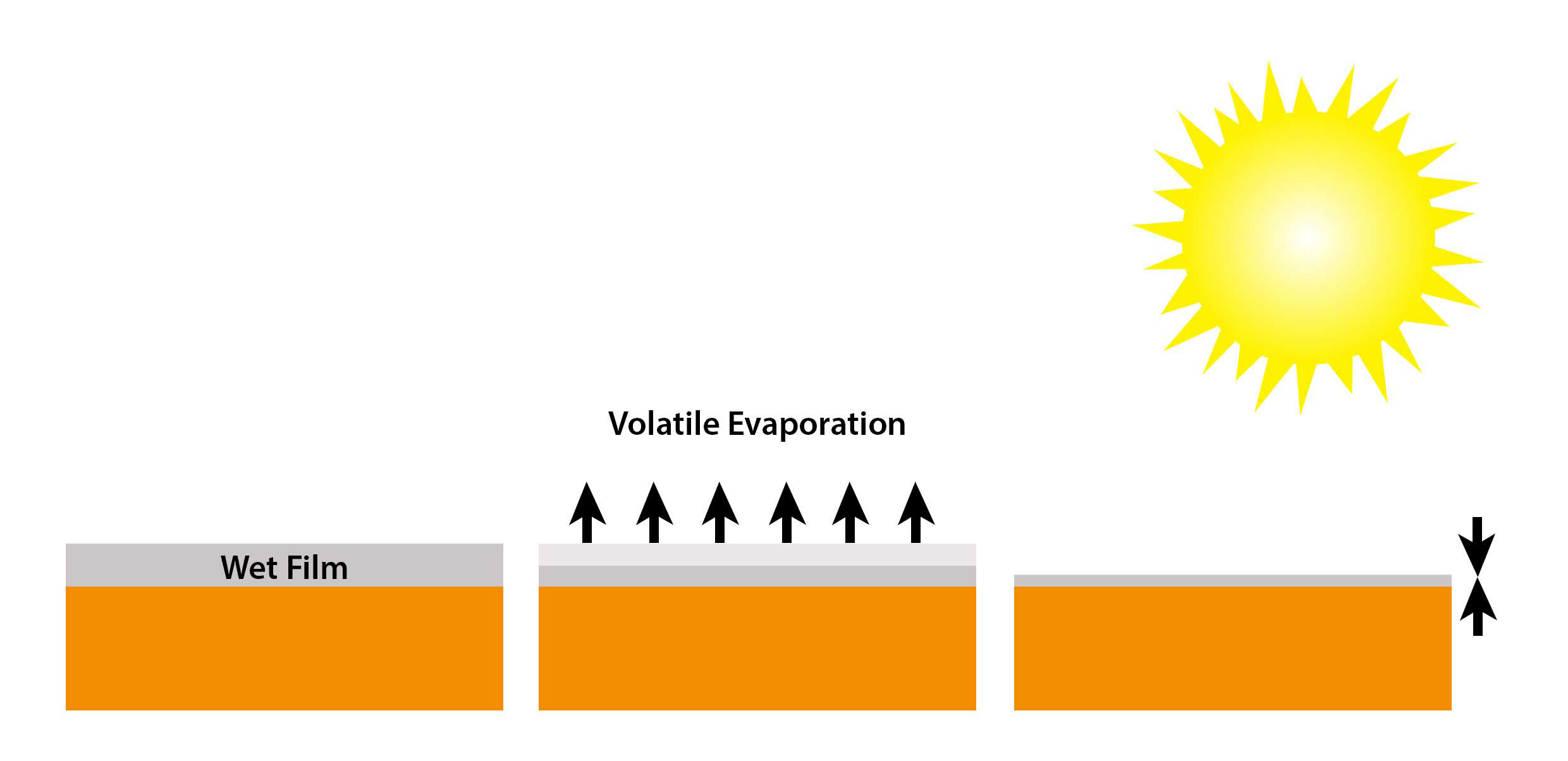
Calculating Dry Film Thickness
Paint consists of volatile and non-volatile components. When the paint is applied to a surface, the volatile components evaporate, leaving the non-volatile solids on the surface.
The ratio of volatile:non-volatile components, known as volume solids, is quoted in the technical data sheet of the coating concerned. The components are often written as a ratio or as a percentage and can be used to predict the dry film thickness (DFT) when the wet film thickness (WFT) is known.
The predicted DFT can be calculated from the WFT using the following formula:
DFT = WFT x Volume Solids

Example
Paint A has a volume solids of 50% and a wet film thickness measured at 250μm (10 mils)
DFT = 250 x 50% = 125μm (5 mils)
Paint B has a volume solids of 70% and the specification requires a dry film thickness of 100µm (4 mils)
WFT=DFT/Volume solids=100/0.7= 143µm (5.7 mils)
Paint C has a volume solids (wet to dry ratio) of 3:1 and a measured wet film thickness of 300μm (12 mils)
DFT = 300 x ⅓ = 100μm (4 mils)
Need Support?
Calculating dry film thickness incorrectly can not only create an uneven surface, but it can costly and timely to rectify depending on the scale of your project.
To calculate it accurately and reliably, we have a range of electronic gauges that measure dry film thickness on any ferrous and non ferrous substrates. Alternatively, you can get in touch with our technical support team for any measurement queries.
